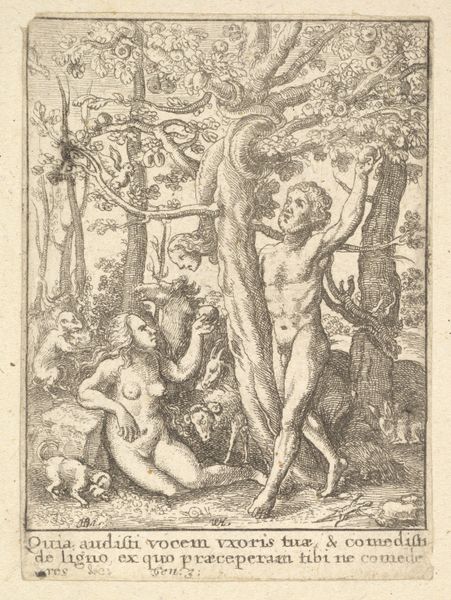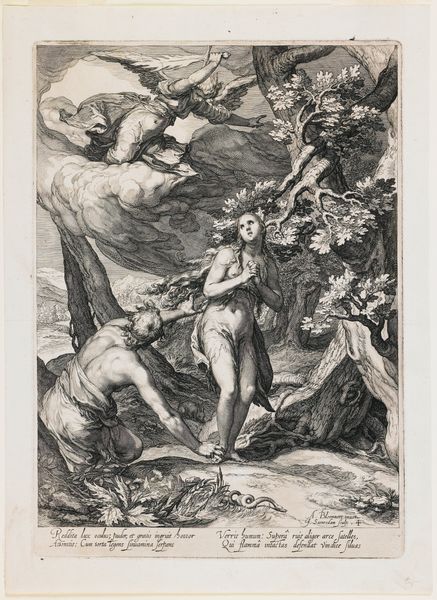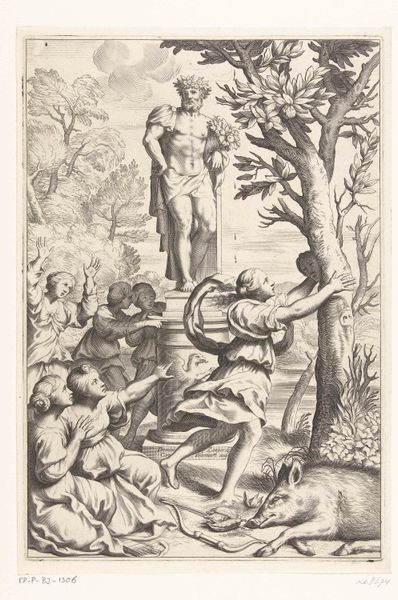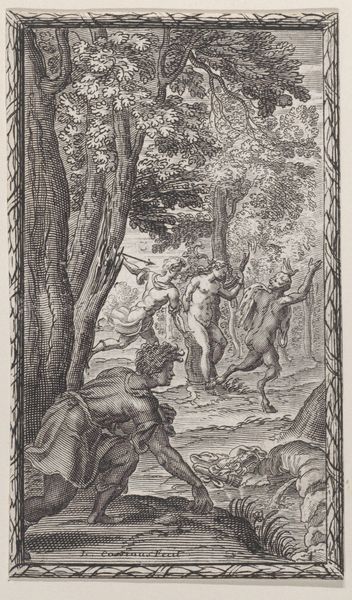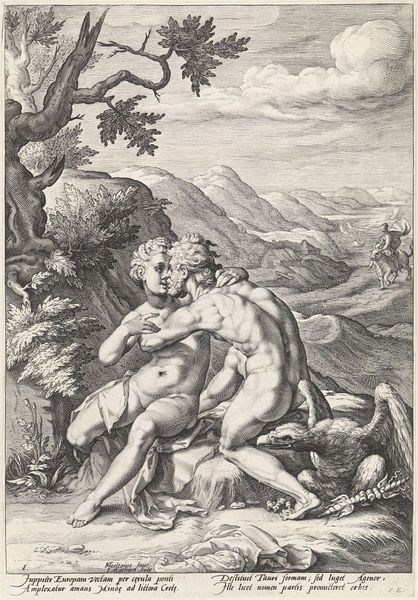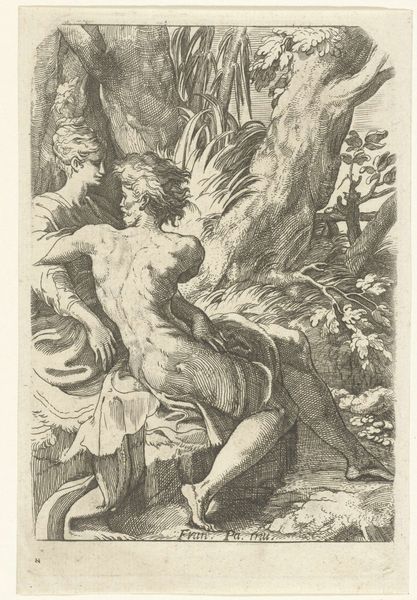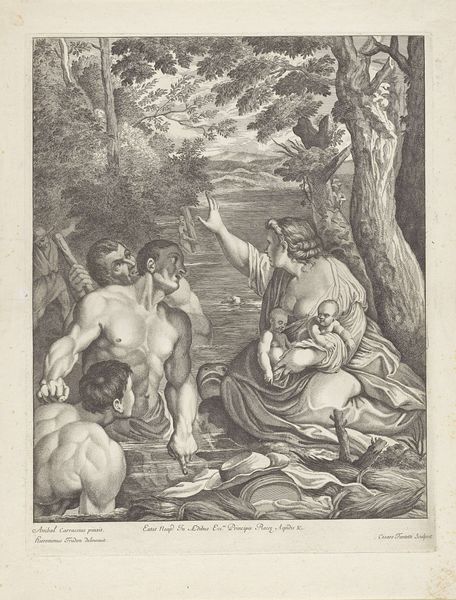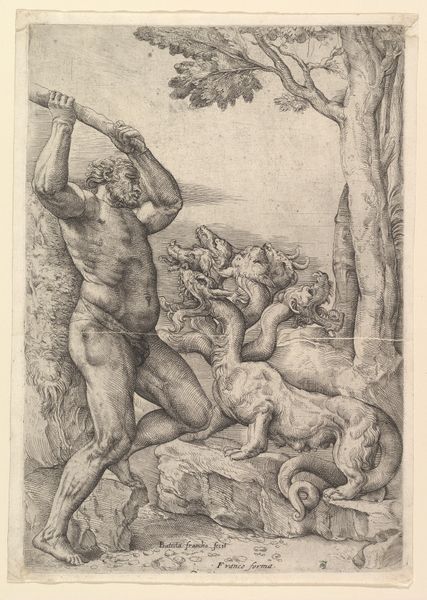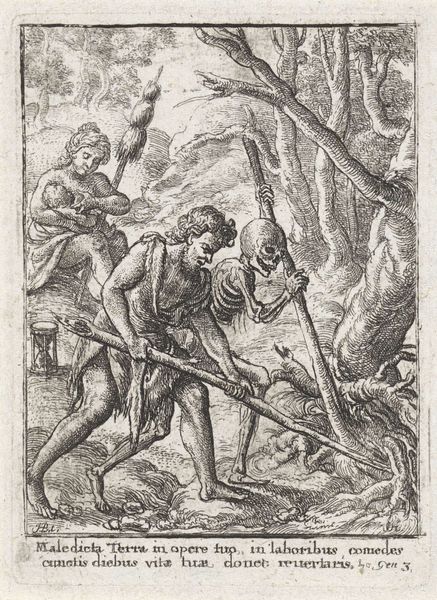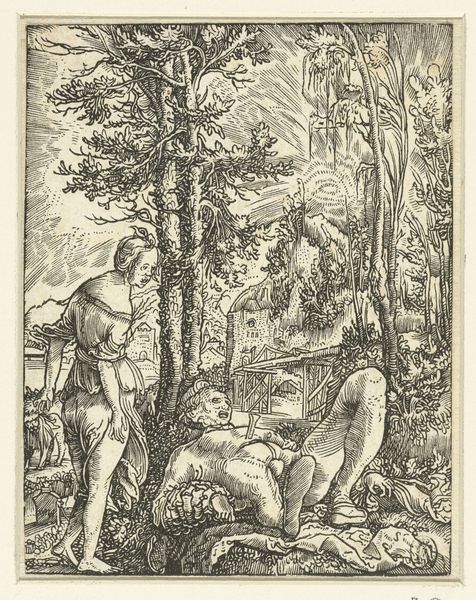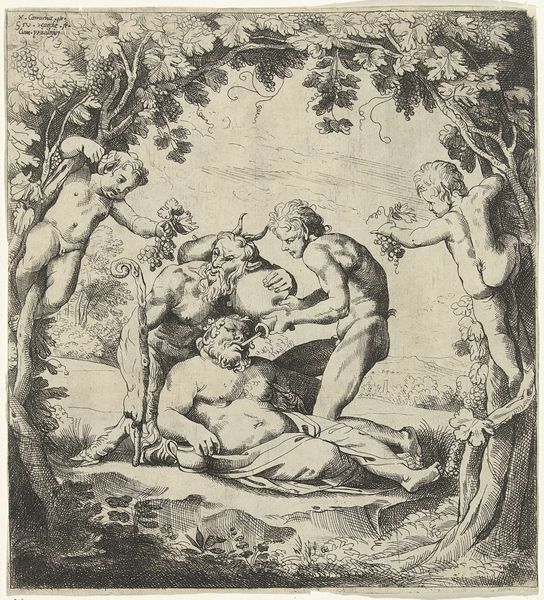
Dimensions: height 190 mm, width 145 mm
Copyright: Rijks Museum: Open Domain
Curator: Here we have Johann Sadeler I's engraving, "Baptism of Christ," created sometime between 1582 and 1584. It’s currently housed in the Rijksmuseum. Editor: Wow, it's intense! So much happening, but it's incredibly detailed, like a miniature epic frozen in time. The light, almost aggressively divine, shining down. It feels a bit dramatic, a tad theatrical maybe. Curator: The baroque influence is definitely present in that drama. But let’s look at the materials. Sadeler’s intaglio technique involved meticulously carving into a metal plate, transferring that to paper. Think of the labor involved! Each line, each shadow represents a conscious decision and painstaking craft. This piece engages not only spiritual contemplation but also reminds us of the manual process central to printmaking. Editor: It’s astonishing how he gets that level of detail. And there's that Renaissance flair for depicting the human form. Look at the muscularity, particularly Christ emerging from the water, almost sculptural. It's idealised but with this… raw quality, the vulnerability contrasting the grand setting. Curator: Exactly, the figuration grounds the narrative within familiar humanist conventions, characteristic of the late Northern Renaissance, but how do these very real depictions function when put in contrast with an event associated with the divine? Sadeler had to engage with complex iconographic language in line with growing counter-reformation principles and beliefs around accessible devotional images. Editor: I wonder what the general public consuming it would think of all these religious signs. I bet that somewhere back in time people felt overwhelmed looking at this and perhaps a little awestruck by all its symbolism. It’s as if I were thrown back into the 16th century looking into peoples beliefs and fears. Curator: Well, remember, the purpose of these prints extended far beyond pure aesthetics; this was art meant to inform, to convert, and reinforce particular ideologies. And, often it served as propaganda, subtly encouraging a relationship with faith and obedience through imagery. Editor: Right. Seeing it now, divorced from that direct intention, it's easier to appreciate the craftsmanship, the artistic merit, and get lost in the landscape. Almost like peeling back layers. Curator: Yes, layers of material history, labor, and ideological positioning are encoded into those lines and spaces, offering more than just a scene to admire but rather an artefact of a specific time and production process. Editor: Absolutely, a physical reminder that art carries meaning far beyond its surface appeal. Curator: A great conclusion that balances both spiritual understanding and concrete awareness to its historical construction. Editor: Cheers! Now, where do we go next? My head is already full!
Comments
No comments
Be the first to comment and join the conversation on the ultimate creative platform.
